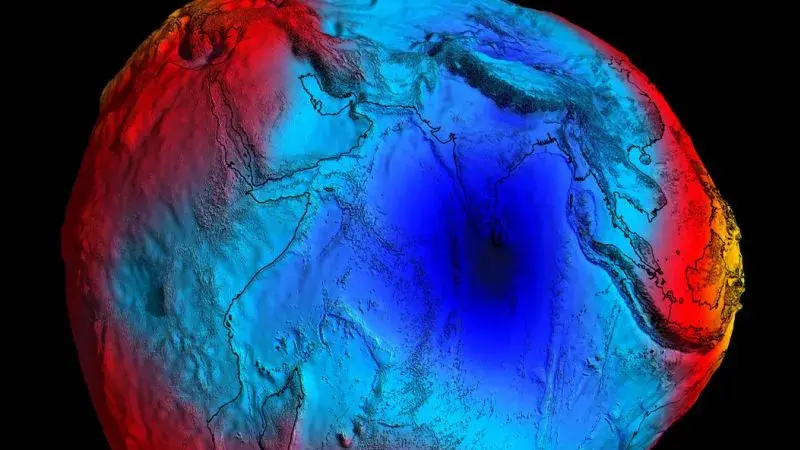- cross-posted to:
- geophysics@lemmy.ca
- cross-posted to:
- geophysics@lemmy.ca
The article didn’t explain it very well, so I’ll ask here. The article said mantle plumes are responsible for the lower gravity in the area. Is this because the magma has a lower density than the surrounding mantle?
The article references the original study, which itself has a “plain language summary”, which I will now quote
The origin of the deepest geoid on Earth, the Indian Ocean geoid low (IOGL), is debated. Several competing hypotheses exist, amongst which, a recent study employing tomography models suggested that hot anomalies at mid to upper mantle depths are crucial in generating this elusive feature. Assimilating plate motion in global mantle convection models from the Mesozoic till the present day, we attempt to trace the formation of this geoid low. We show that flow induced by downwelling Tethys slabs perturbs the African Large Low Shear Velocity province and gives rise to plumes that reach the upper mantle. These plumes, along with the mantle structure in the vicinity of the geoid low, are responsible for the formation of this negative geoid anomaly. Exploring a wide model parameter space, such as the density and intrinsic viscosity of the thermochemical piles, Clapeyron slope and density jump at 660 km depth, strength of slabs, we show that plumes are integral in generating the IOGL. The contribution of lower mantle Tethys slabs is secondary but also necessary in generating this geoid low.
Now, I’m a geophysicist, so I understand this. But I would argue that this is not plain language, haha. Scientists are so bad at this. So let me run this through my handwavey physics explainer.
The hot plumes have lower density than the surrounding material. This is due to basic rules of thermodynamics: if you heat something up, either the pressure rises, or the volume increases. In this case, the volume of the hot plume increased, making it less dense. It’s also the reason the plume is rising to the surface. Note that it’s rising on the timescales of hundreds of millions of years. So, if the mantle material is less dense in that spot, then there’s physically less matter there to create gravity in that spot.
The difference in gravity between there and where-ever you are – is probably not noticeable unless you have a very sensitive instrument. In high school physics, you learn that gravity is 9.8 m/s² – and that’s fairly accurate. But if you add a bunch of decimal points to that, you start to see variations. Across the whole earth, it varies from 9.78 (near the equator) to 9.83 (near the poles), and there’s other small variations regionally. This “gravity hole” (I hate that term) is just a location with slightly less gravity than average if one were to assume the earth were made of a uniform material.
Also, this headline feels familiar, because stories like it are published repeatedly: See this headline from 2017, for example: https://iisc.ac.in/scientists-find-out-the-cause-for-geoid-low-in-the-indian-ocean/ or this one from 2019: https://eos.org/science-updates/seismologists-search-for-the-indian-oceans-missing-mass
Wouldn’t an a area of low gravitational pull create a hill instead of a valley in the ocean?
The surrounding areas with higher gravitation pull away the water from that spot.
Ah that makes sense. Thanks!
I had no idea this existed, but I get the feeling that it’s going to become a hot vacation destination for celebrities on Ozempic.
This is the kind of thing that I used to be on reddit for. Love it :)




